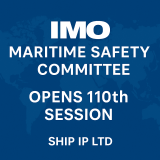In the latest of the C-Suite series by IBM Institute for Business Value, sustainability was found to be top of mind for CEOs. The study, interviewing 3,000 CEO’s, revealed that there has been a dramatic emergence of sustainability onto the ‘mainstream corporate agenda’ with CEOs identifying sustainability as their ‘greatest challenge’. With reports of CEOs experiencing great pressure from board members and investors to transform their business in pursuit of becoming more sustainable, there’s great need for change in the corporate world, but where are the examples of companies taking a step in the right direction?
Cognition Foundry is a shining example of a company putting sustainability at the heart of what they do with their aim “to create nurturing, collaborative partnerships that contribute to a better world”. Cognition Foundry’s core IT infrastructure is built on IBM products due to client demand for IT systems with low energy profiles and minimal impact on our planet’s future and Cognition Foundry has invested in IBM LinuxONE servers which are far more straightforward to manage than the complicated cloud computing which exists on the market today.
An excellent example of how Cognition Foundry is exploiting the IBM LinuxONE mainframe is in the ground-breaking IBM Mayflower Autonomous Ship project. The Mayflower project uses IBM’s revolutionary technology to help transform the way we can help scientists and governments respond to the climate crisis focusing on the largest ecosystem on earth, our oceans. Cognition Foundry plays a pivotal role in this venture, working with their partner Videosoft Global Ltd.
Videosoft Global Ltd developed technology which allows live videos to be transmitted at low bit rates whilst maintaining reliable connectivity and reduce latency to a minimum. The use of high-definition colour cameras on-board the Mayflower allows footage to feed into a Videosoft gateway encoder which then compresses each video stream to send over satellite to virtual servers installed on an IBM LinuxOne mainframe. From there, the footage is relayed on to the IBM Watson Media platform, and then streamed live to every user that is tuned in to the live dashboard.
The intelligent collaboration between IBM Business Partner TES, Cognition Foundry and Videosoft has contributed to the development of cutting-edge innovation which can only help accelerate our trajectory in finding new ways to tackle the climate crisis. Videosoft Global CEO, Stewart McCone says “We are always delighted to be involved in ground-breaking projects such as the Mayflower Autonomous Ship. In this case a successful collaboration between marine specialists and technology has enabled this project to happen, which will deliver valuable benefits to the world in the future. The Videosoft technology plays a key part in linking shore side operations to remote vessels over the satellite network and the IBM LinuxOne platform delivers reliable, secure and scalable services to distribute the live video to the public, educational institutions and media outlets across the globe.” Since investing in LinuxONE, Cognition Foundry has helped many start-ups validate, develop, deploy and mature their ideas.
Cognition Foundry together with IBM received a UN Sustainability Award for their Plastic Bank Blockchain solution. This project meant that an estimated 2.3 billion plastic bottles were prevented from entering the oceans as well as creating a source of income for more than 20,000 of the world’’ poorest. By contributing to both environmental and social causes Cognition Foundry has positively left their mark as one of the pioneering tech companies, along with IBM, who are working toward reaching our UN Sustainable Development Goals.
As the Mayflower Autonomous Ship sailed from Plymouth UK to Plymouth USA, we’re confident that by complement Videosoft’s encoding technology, IBM LinuxONE ensured their video streams are available for all to see. As the technology is exploited further, we hope to see a range of new services and solutions developed that will impact blue light, improve security, drive efficiencies in satellite communication and complement autonomous shipping. What innovative application of technology can you develop to help in reaching the 17 UN Sustainable development goals to help to the turn the tide on climate change?
Source: https://www.ibm.com/blogs/business-partners/tech-for-good-the-mayflower-autonomous-ship-and-the-role-of-the-mainframe/

 “The judges liked our prototype, not only because it overcomes an environmental challenge, but also because it is ready for immediate production. Made out of simple components, it can be easily assembled and programmed for mass implementation,” Al Warfeli told CGTN.
“The judges liked our prototype, not only because it overcomes an environmental challenge, but also because it is ready for immediate production. Made out of simple components, it can be easily assembled and programmed for mass implementation,” Al Warfeli told CGTN. Abdallah Mohamed from Egypt was another first-time participant. His design clinched the win in the contest’s “Follow the Line” category. It’s a challenge where robots must follow a line from beginning to end in a field full of obstacles. The challenge is to program robots to figure out how to find their way around the obstacles and finish the course in the shortest time.
Abdallah Mohamed from Egypt was another first-time participant. His design clinched the win in the contest’s “Follow the Line” category. It’s a challenge where robots must follow a line from beginning to end in a field full of obstacles. The challenge is to program robots to figure out how to find their way around the obstacles and finish the course in the shortest time. The access the championship gives to its archives aims to build up an accumulative body of knowledge for the region’s young engineers to learn from. This way, students participating get empowered to introduce more advanced technologies than those used in previous editions of the contest.
The access the championship gives to its archives aims to build up an accumulative body of knowledge for the region’s young engineers to learn from. This way, students participating get empowered to introduce more advanced technologies than those used in previous editions of the contest. The winners in that challenge came from Qatar. They say that, while battling it out for control of the ball is fun and exciting, these robots can also be used for practical, real-world applications.
The winners in that challenge came from Qatar. They say that, while battling it out for control of the ball is fun and exciting, these robots can also be used for practical, real-world applications. “Our school has been competing in the robotics championships for seven years. Robotic technology is a fast-growing field. So every year the requirements for the competition are completely different from the one before. The innovations are inspiring. The number of countries and participants continue to grow,” he added.
“Our school has been competing in the robotics championships for seven years. Robotic technology is a fast-growing field. So every year the requirements for the competition are completely different from the one before. The innovations are inspiring. The number of countries and participants continue to grow,” he added.




